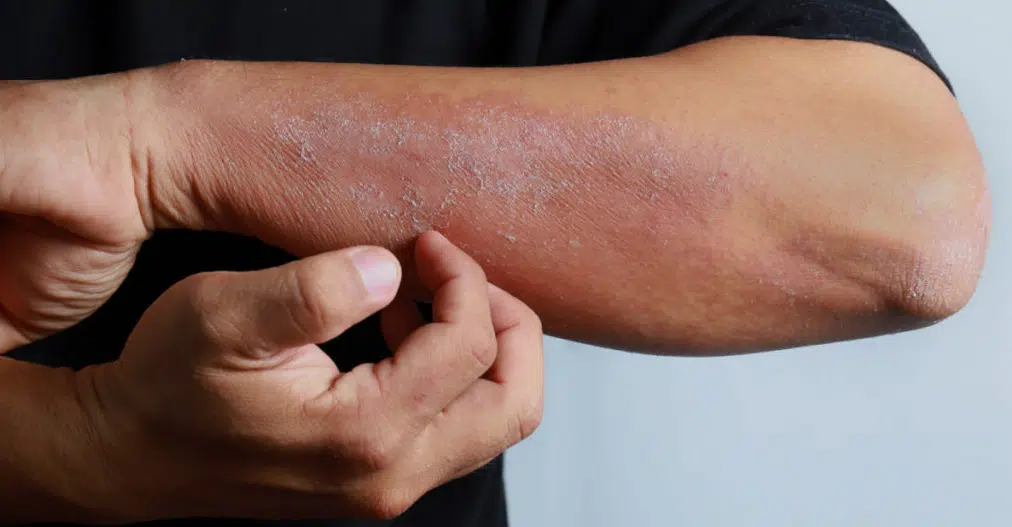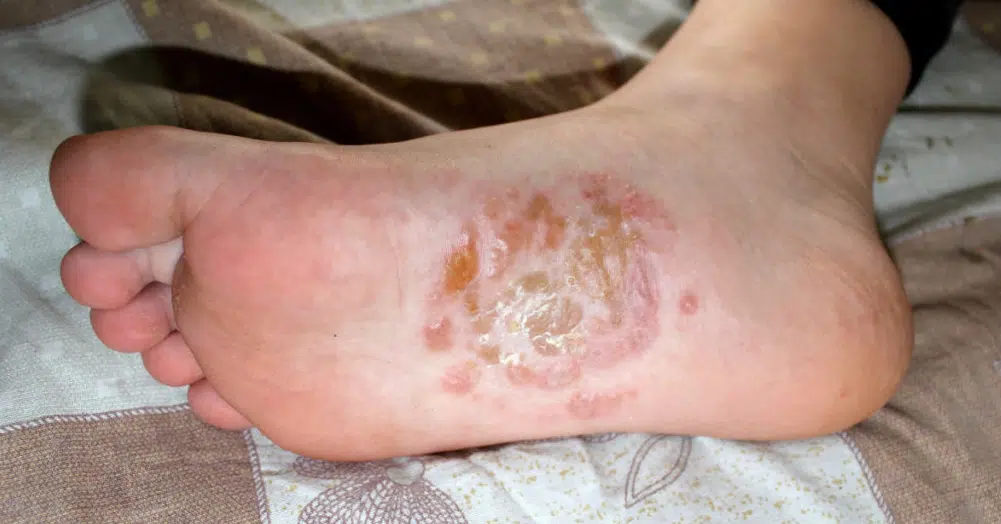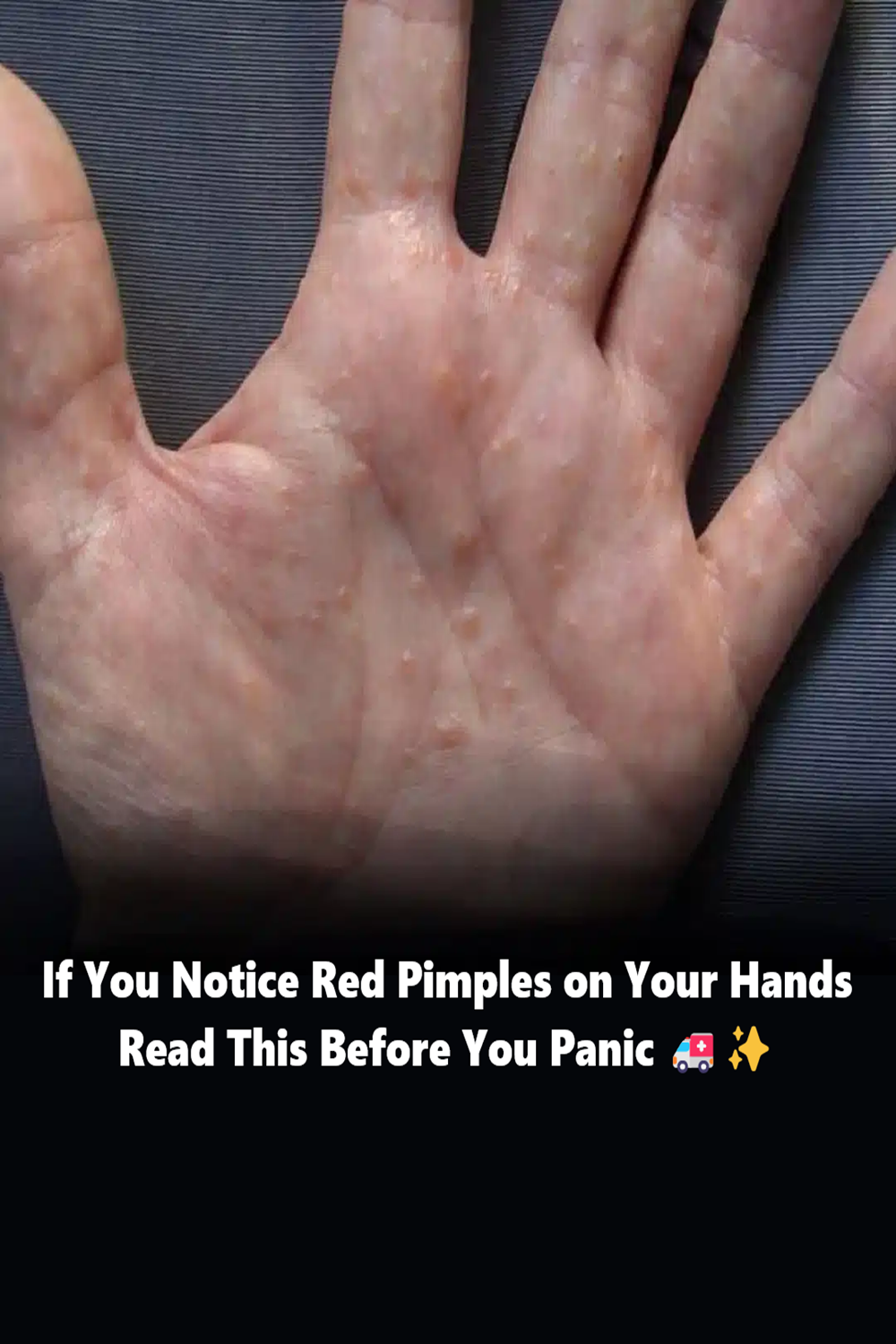
Imagine a shoe blister… but one that appears without warning, on your hands or feet, and returns as soon as spring arrives. These small, painful, itchy blisters aren’t just a passing reaction: they could be dyshidrotic eczema , a form of eczema linked to seasonal allergies.
Although the word may sound a bit scary, rest assured: this type of eczema is neither serious nor contagious . However, it remains very uncomfortable and requires special attention.
What are the signs to recognize?

You don’t need to be a dermatologist to identify a breakout. Here are the most common symptoms:
- Small, very itchy blisters on the edges of the fingers, toes, palms, or soles of the feet.
- Localized redness and burning sensations.
- Peeling of the skin, which becomes dry, scaly, or even cracked.
- Sometimes sharp pain, especially if the blisters break open or become infected.
This type of eczema often appears in adults between the ages of 20 and 40, with a predominance in women. It is also common in people who already suffer from respiratory allergies, atopic eczema or allergic rhinitis .
Why do these blisters appear?
As is often the case in health, there is not a single cause, but a set of triggering factors :
- Genetic predisposition : If a family member is affected, you are more likely to suffer from it too.
- Stress : It can make flare-ups worse.
- Seasons : Spring, with its pollen and temperature changes, is a critical time.
- Irritant products : harsh soaps, household products, prolonged wearing of gloves, etc.
The right actions to relieve dyshidrotic eczema
Continued on the next page 👇




